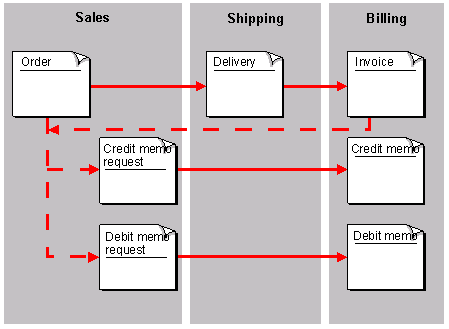
As such, having a good cash balance is a must when you want to keep things moving. Maintaining the right processes and procedures can help keep your business on the positive side of things. There isn’t a simple answer to that question; both profit and cash flow are important in their own ways. As an investor, business owner, employee, or entrepreneur, you need to understand both metrics and how they interact with each other if you want to evaluate the financial health of a business. Positive cash flow occurs when a business is left with cash even after paying all cash outflow expenses such as operations and debt. Companies are able to generate sufficient positive cash flow for operational growth.
Your accounting software should have a cash flow statement as one of the standard reports, or your accountant can run it for you. The best way to keep track of cash flow in your business is to run a cash flow report. This report shows the cash you received and the cash paid out to show your business’s cash position at the end of every month. At times, you may need to keep track of cash flow on a weekly, or even daily, basis. So, what types of income and expenses go into the three different types of cash flows? Here’s a helpful guide on the types of cash flows and what to include in each category.
Revenue is the money a company earns from the sale of its products and services. Cash flow is the net amount of cash being transferred into and out of a company. Revenue provides a measure of the effectiveness of a company’s sales and marketing, whereas cash flow is more of a liquidity indicator. Both revenue and cash flow are used to help investors and analysts evaluate the financial health of a company. As we have discussed, the operating section of the statement of cash flows can be shown using either the direct method or the indirect method.
Financing Cash Flow
Inflows from investing can include the sale of assets and interest from investments, while outflows can consist of asset purchases and losses from securities. The difference lies in how the cash inflows and outflows are determined. P/CF is especially useful for valuing stocks with positive cash flow but are not profitable because of large non-cash charges.

Examples of investment include purchases of speculative assets or investments in securities. Cash flow represents revenue received — or inflows — and expenses spent, or outflows. The total net balance over a specific accounting period is reported on a cash flow statement, which shows the sources and uses of cash.
Five Steps to Cash Flow Analysis
The companies that grow it, become more valuable; the ones that don’t, well, don’t. When the cash flow from financing is a positive number, it means there is more money coming into the company than flowing out. When the number is negative, it may mean What is cash flow the company is paying off debt or is making dividend payments and/or stock buybacks. When cash flows are not stable, a business is forced to obtain a line of credit, so that it can access debt when the cash balance is expected to go negative.
- There was no cash transaction even though revenue was recognized, so an increase in accounts receivable is also subtracted from net income.
- It’s also called “running out of money,” and it will shut you down faster than anything else.
- But if you don’t leave the store with the phone – for instance, if it’s not in stock and they have to order it – Apple can’t report that phone sale as revenue until you get your phone.
- In this situation, an investor will have to determine why FCF dipped so quickly one year only to return to previous levels, and if that change is likely to continue.
As businesses generate cash, they can develop additional strategies by partnering or acquiring other companies to increase cash inflow further. Cash inflow is incredibly important because it is how revenue and profit is generated. A positive inflow of cash, helps a business grow while also maintaining its expenses. Having a clear understanding of how cash is being received and spent, and to understand overall cash flow management is vital to mitigate any cash flow problems before they arise and damage the business. To start, GAAP – generally accepted accounting principles – is the law of the land for how U.S. companies report their financial results. And under these principles, companies “recognize” revenue and expenses related to each transaction in the fiscal period that they actually deliver the goods or service to the customer.
Why Looking at Cash Flow From Financing Activities Is Important and Net Cash Flow Isn’t Enough
Free cash flow shows a company’s ability to generate cash above its operating and investing needs. To calculate FCF, we would subtract capital expenditures from cash flow from operations. In addition to looking at the standard cash flow statement and details, it’s often also useful to calculate different versions of cash flow to give you additional insights. For example, free cash flow excludes non-cash expenses and interest payments and adds in changes in working capital, which gives you a clearer view of operating cash flows. Unlevered free cash flow shows you cash flow before financial obligations while levered free cash flow explains cash flow after taking into account all bills and obligations.
- The key to a successful business is being able to use different cash flows for financial analysis.
- As a result, D&A are expenses that allocate the cost of an asset over its useful life.
- Cash flow analysis typically begins with the statement of cash flows, which breaks down cash flows into sections for operating, financing, and investing activities.
- Every company that sells and offers its stock to the public must file financial reports and statements with the U.S.
- Investors want to put their funds into a business with a strong cash flow.
Cash Flow (CF) is the increase or decrease in the amount of money a business, institution, or individual has. In finance, the term is used to describe the amount of cash (currency) that is generated or consumed in a given time period. There are many types of CF, with various important uses for running a business and performing financial analysis. The cash flow statement complements the balance sheet and income statement and is part of a public company’s financial reporting requirements since 1987.
Which Is More Important: Cash Flow or Profit?
Cash and cash equivalents include currency, petty cash, bank accounts, and other highly liquid, short-term investments. Examples of cash equivalents include commercial paper, Treasury bills, and short-term government bonds with a maturity of three months or less. Using the indirect method, actual cash inflows and outflows do not have to be known. The indirect method begins with net income or loss from the income statement, then modifies the figure using balance sheet account increases and decreases, to compute implicit cash inflows and outflows.
Parsons Corporation’s (NYSE:PSN) Intrinsic Value Is Potentially 49% Above Its Share Price – Simply Wall St
Parsons Corporation’s (NYSE:PSN) Intrinsic Value Is Potentially 49% Above Its Share Price.
Posted: Tue, 22 Aug 2023 11:46:27 GMT [source]
In estimating your cash flow needs for your startup, include your personal living expenses that will need to come out of the business. The less you need to take from your business for personal costs, the more you can devote to your business during the crucial startup time. There are several types of Cash Flow, so it’s important to have a solid understanding of what each of them is. When someone refers to CF, they could mean any of the types listed below, so be sure to clarify which cash flow term is being used.
What Is Profit?
Indeed, more than a third of SMEs cite issues with cash flow as a barrier to their growth. If you’re watching your cash, you’ll know when you can afford to expand. When your business’s cash flow is strong enough to allow for expansion, it means that you can do so safely. Without the confidence of a strong cash flow, expansion should be avoided. When discussing cash flow, there are generally three types that you need to know about.
Alternatively, perhaps a company’s suppliers are not willing to extend credit as generously and now require faster payment. That will reduce accounts payable, which is also a negative adjustment to FCF. A common approach is to use the stability of FCF trends as a measure of risk.
This should provide you with the final line item on the cash flow statement. As you can see, using the Wise cash flow template, the cash flow statement includes the different types of cash flow across different parts of the business to understand its financial performance. It’s also worth noting that free cash flow doesn’t work well for every kind of business. Companies like banks, financial service providers, and insurers make a good bit of their money from a mix of fees from operations and income from investments. As is often the case, don’t count on any single metric being the one that tells you everything about any company. In an asset-intensive industry, it makes sense to measure the productivity of the large investment in assets by calculating the amount of cash flow generated by those assets.
The purchasing of new equipment shows that the company has the cash to invest in itself. Finally, the amount of cash available to the company should ease investors’ minds regarding the notes payable, as cash is plentiful to cover that future loan expense. In the case of a trading portfolio or an investment company, receipts from the sale of loans, debt, or equity instruments are also included because it is a business activity. Since CF matters so much, it’s only natural that managers of businesses do everything in their power to increase it.
In this article, we’ll show you how the CFS is structured and how you can use it when analyzing a company. Cash flow is the net cash and cash equivalents transferred in and out of a company. Cash received represents inflows, while money spent represents outflows. A company creates value for shareholders through its ability to generate positive cash flows and maximize long-term free cash flow (FCF).
Because it measures cash remaining at the end of a stated period, it can be a much “lumpier” metric than net income. Regardless of the method, the cash flows from the operating section will give the same result. Remember that the indirect method begins with a measure of profit, and some companies may have discretion regarding which profit metric to use. While many companies use net income, others may use operating profit/EBIT or earnings before tax.
